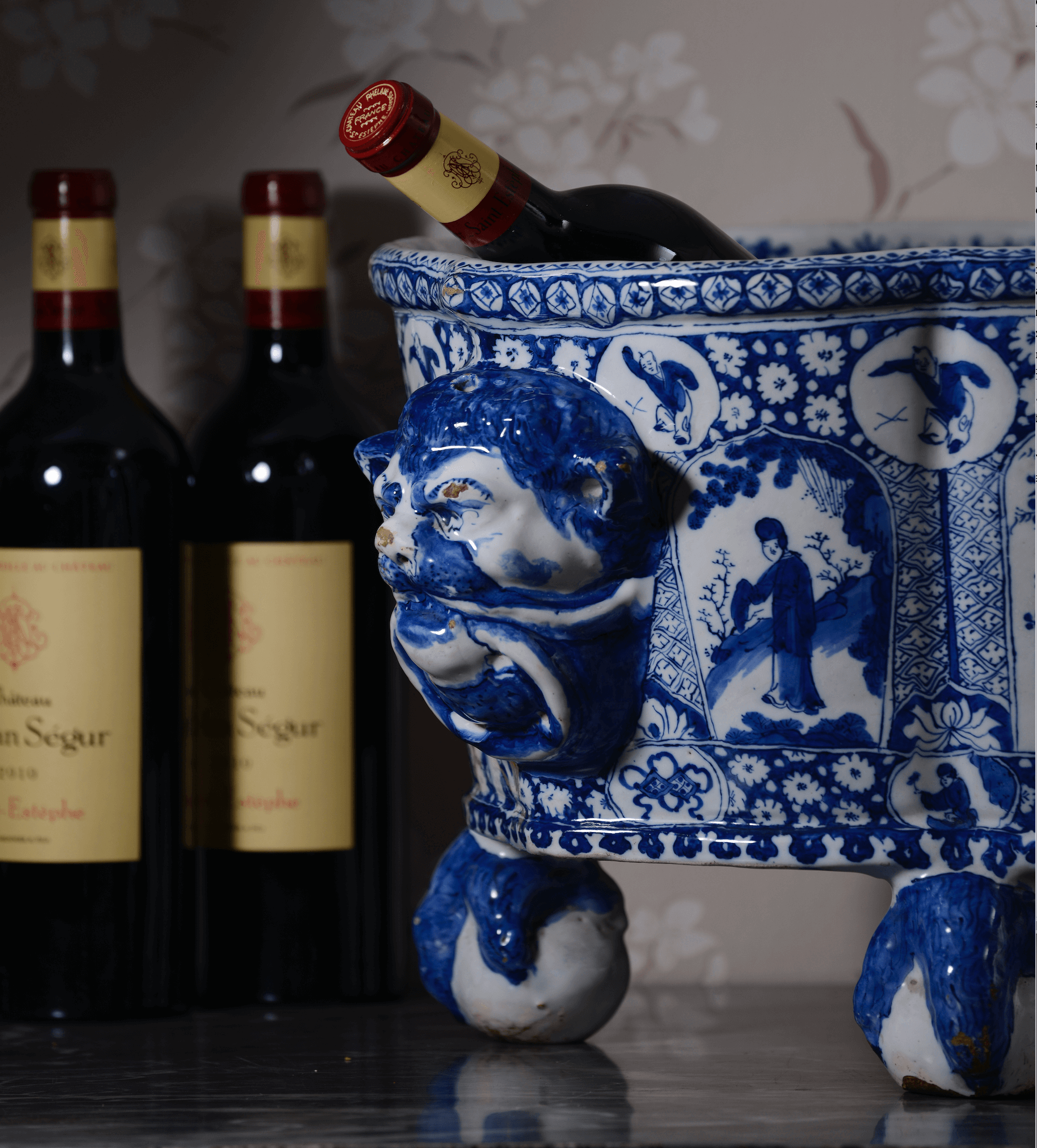
The Attribution of a Wine Cooler
Beginning in the early 1680s, Delft potteries began to mark their wares with either the pottery owner’s initials or the name of the factory. Marks were applied for economic reasons, especially for foreign trade when the mark was a means of recognition and quality assurance, comparable with the modern trademark. The marking of objects contributed significantly to the flow of these goods abroad. Foreign clients ordered objects branded by certain potteries, without knowledge of the specific factory owner.1 Since the pottery trade generally ran through merchants and shopkeepers, these trade contacts and their customers could not verify the origin of the objects. Therefore it was important to be able to determine at which pottery the object was made. The mark guaranteed the origin and the quality of which the pottery was known for.2 However, not every object from this period is marked and there are many important and exceptional unmarked objects, while many objects of lesser quality are marked.
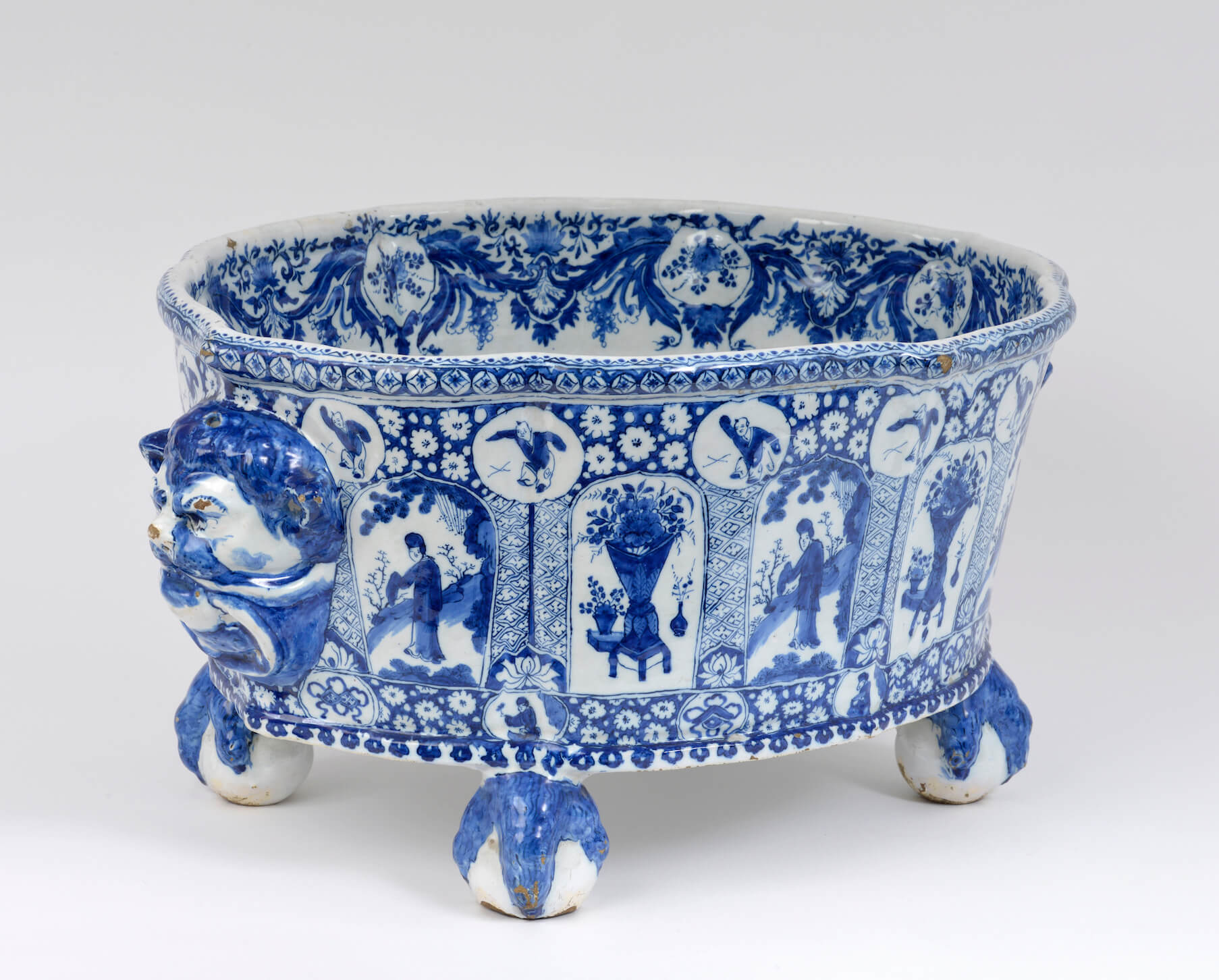 The above applies to the story of this exceptional wine cooler, which is one such example of an exceptional and important object that is not marked. There is only one other known wine cooler of this size and shape, but with a different decoration, and also unmarked. This example was sold at Frederik Muller & Cie Amsterdam, between the 13th and 19th April 1920, lot 1111. Although the present wine cooler is unmarked, and there are no similar marked wine coolers, many of its stylistic details suggest that it was designed, painted and produced by De Grieksche A (The Greek A) factory, under the ownership of Adrianus Kocx from 1686 to 1701.
The above applies to the story of this exceptional wine cooler, which is one such example of an exceptional and important object that is not marked. There is only one other known wine cooler of this size and shape, but with a different decoration, and also unmarked. This example was sold at Frederik Muller & Cie Amsterdam, between the 13th and 19th April 1920, lot 1111. Although the present wine cooler is unmarked, and there are no similar marked wine coolers, many of its stylistic details suggest that it was designed, painted and produced by De Grieksche A (The Greek A) factory, under the ownership of Adrianus Kocx from 1686 to 1701.
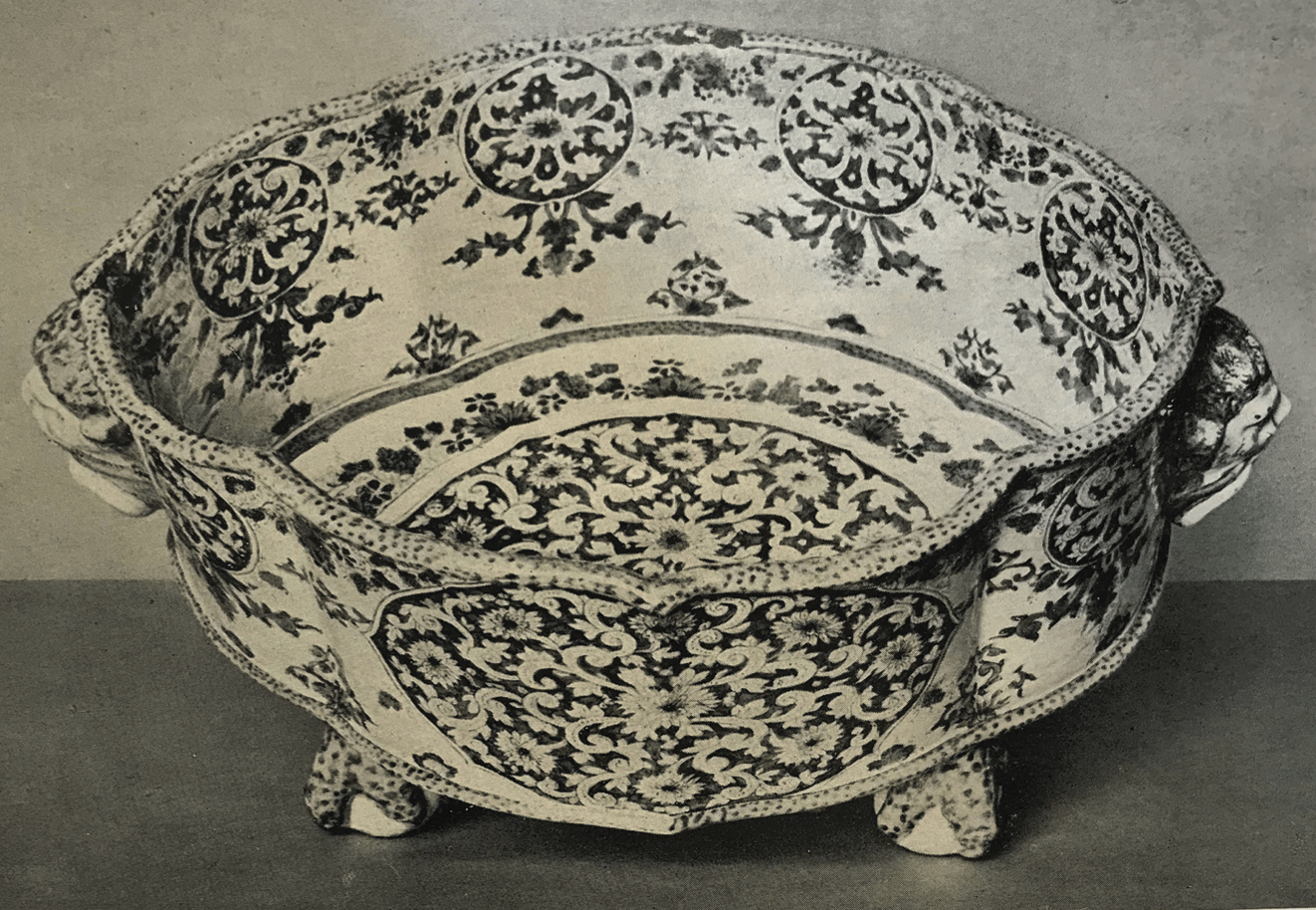
At the end of the seventeenth century there were only a few factories that had the skill to produce such a large and quality object as this wine cooler. Probably part of a larger wine service, this object would have been very expensive to produce and was likely made on commission for the Royal court or its circle. The only factories capable of this level of production were De Grieksche A, De Metaale Pot (The Metal Pot) or De Witte Starre (The White Star) factory. De Grieksche A factory, under the ownership of Samuel van Eenhoorn and Adrianus Kocx, produced many objects for the court, such as flower vases but also monteiths and other objects for the service of wine. De Metaale Pot factory also produced high quality objects such as flower vases. For example, the pair of pyramidal flower vases with the busts of Mary in the Rijksmuseum, Amsterdam and a similar pair in the Victoria & Albert Museum in London are both attributed to this factory. De Witte Starre also produced large and expensive objects, such as flower vases at the end of the seventeenth century.
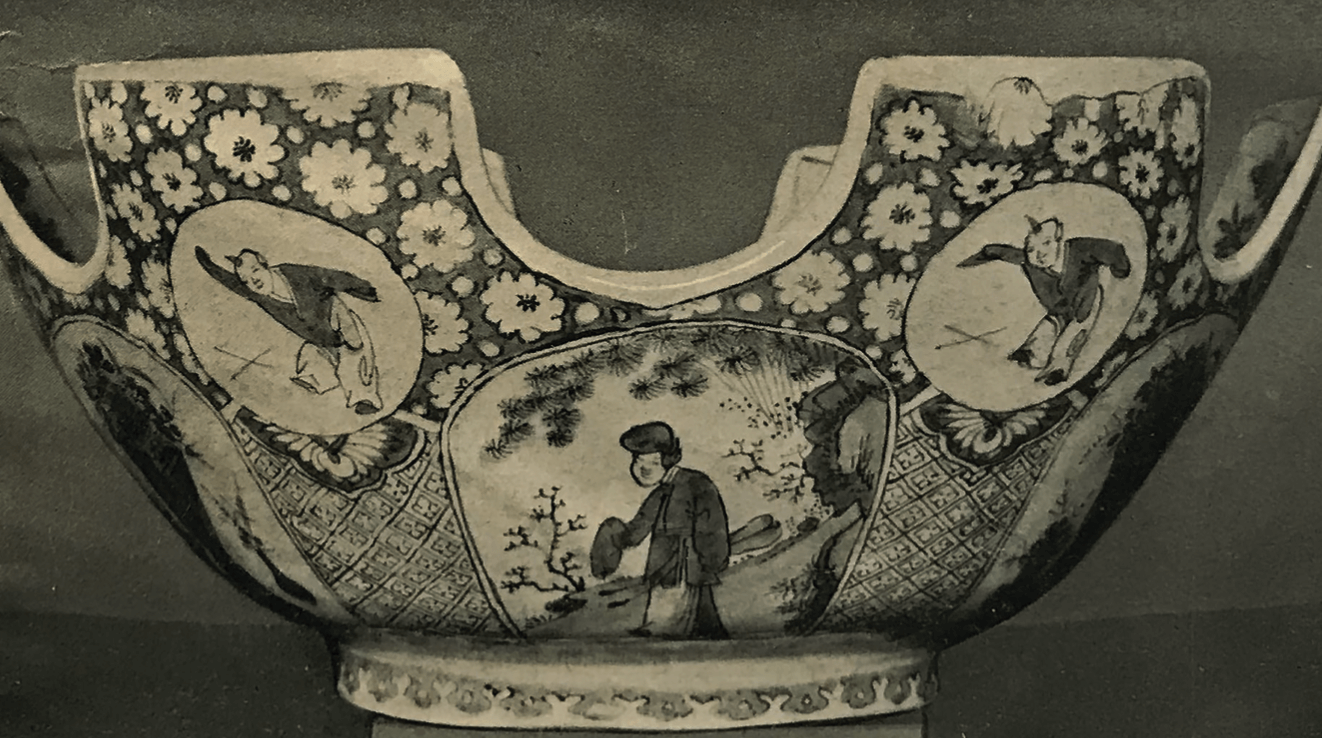
Many of the stylistic characteristics of the wine cooler suggest an attribution of its maker. One outstanding feature is the symbiosis of the oriental influences and the Western baroque qualities. Long Eliza’s, dancing boys and typical oriental flower vases on a table are alternated with lotus flowers and Daoist or Buddhist motifs. The inside of the cooler however also shows a baroque border of lambrequins and grapes. The juxtaposition of these stylistic traits characterize the period of Adrianus Kocx’ ownership at De Grieksche A from 1686 to 1701. Many of the objects produced under his ownership are decorated with lambrequins, an ornamental motif found on both Chinese and European designs. In France, the motif was used by Jean Berain (1640-1711), designer of King Louis XIV.3 Berain’s style was characterized by delicate arabesques and whimsical grotesques that originally derived from the Renaissance. Using light floral patterns, Berain famously combined foliage with human and animal forms that prefigured the Rococo movement.4 His style was first adopted by the maiolica potteries from Rouen, where the use of lambrequins evolved toward an extreme refinement. The French designer Daniel Marot later exported Berain’s style to the Netherlands, when he was employed by William III and Mary II to redesign the Palace Het Loo after the revocation of the Edict of Nantes by Louis XIV.
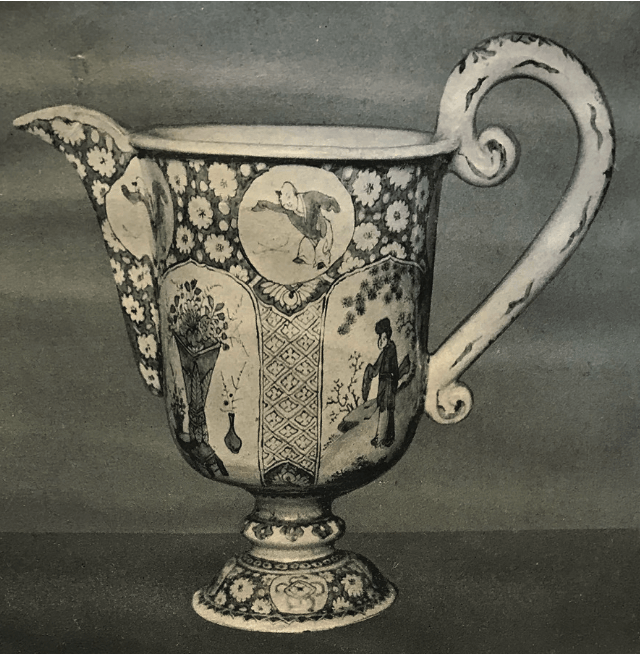
Further attributable characteristics to De Grieksche A factory under the ownership of Adrianus Kocx are the handles formed as lion masks and feet molded as paws. These were common motifs found in the Netherlands, England and France, who followed Mary’s lead by ordering grandiose Delft ceramics to enhance the many splendid houses, which, particularly in England, were being built or refurbished at the time. It is no coincidence that the English nobility used architecture, interior design and ornamentation as a means to gain social and political status, and during the reign of William and Mary, they adapted easily to the Dutch court style. These sculptural lion masks and molded paws that were typical of Adrianus Kocx’s designs also bear strong similarity to the designs of Daniel Marot. As both Marot and the factory of Adrianus Kocx were purveyors of William and Mary, it is highly probable that they collaborated on many objects commissioned by the Royalty and its circle.
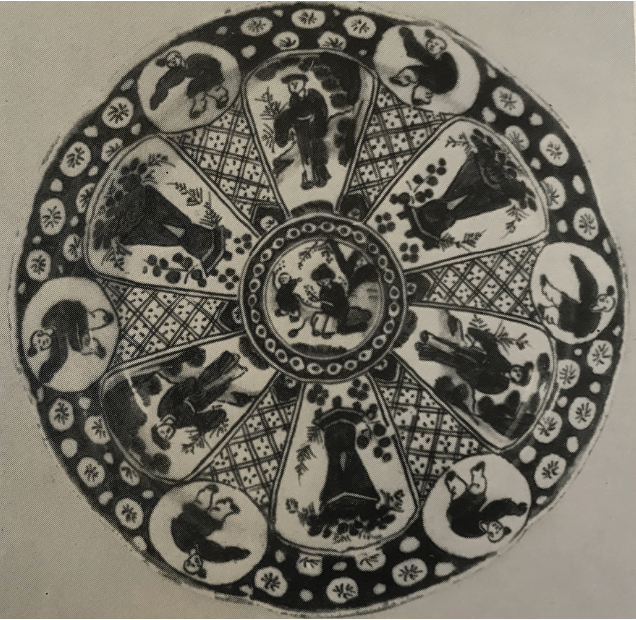
Several similar marked objects further indicate that the wine cooler was made at De Grieksche A factory. Since the this wine cooler was undoubtedly part of an exceptional service, other objects for this service with the same decoration must have been made. A small plate, illustrated in De Jonge 1970, p. 57, ill. 53, shows a similar decoration of panels with chinoiserie figures alternated by vases that are separated by trelliswork. The blue ground rim reserved with dots and medallions depicting a jumping boy is also striking. The plate is marked AK, and was probably wrongly attributed to De Dubbelde Schenkkan (The Double Jug) from 1688-1713, when it was available on the art market in 1965.
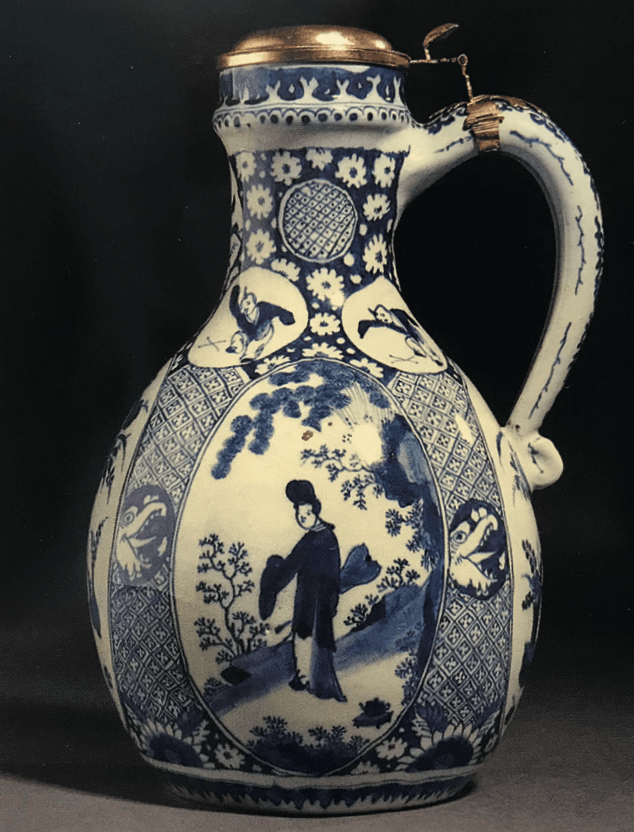
A blue and white oviform ewer with a later gilt-metal mount is also alternately painted with vases of flowers and a long Eliza with a fan, amongst shrubs in a landscape within four oval panels on a trelliswork ground. The shoulder has four circular panels with a dancing boy on the blue ground reserved with flowerheads and dots. This ewer, bearing a blue AK mark, was sold at Christie’s London on October 7th, 1996, lot 198. Another identical ewer, also marked for Adrianus Kocx, was sold at A. Mak B.V. Dordrecht on the 8-14th December 1992, lot 1373, which is now in a French private collection. Further, a monteith (or glass cooler) and a ewer with the same decoration and marked for Adrianus Kocx were sold at Frederik Muller & Cie Amsterdam on the 28th – 29th April 1908, lot 7.
The similarity of these AK-marked objects decorated with the same vignettes and ornaments, and their related function to this wine cooler present no doubt that it was created by De Grieksche A under the ownership of Adrianus Kocx at the end of the seventeenth century.
Notes
1 M.S. van Aken-Fehmers, L.A. Schledorn, T.M. Eliëns, Delfts aardewerk. Geschiedenis van een nationaal product, Volume II, Zwolle/Den Haag (Gemeentemuseum) 2001, p.22
2 M.S. van Aken-Fehmers, L.A. Schledorn, T.M. Eliëns, Delfts aardewerk. Geschiedenis van een nationaal product, Volume II, Zwolle/Den Haag (Gemeentemuseum) 2001, p.22
3 H.-P. Fourest, Delftware, London 1980, p. 22
4 F. Kimball, “Some French Books of Ornament” in Bulletin of the Pennsylvania Museum, 26.142, 1931, pp. 5–10
